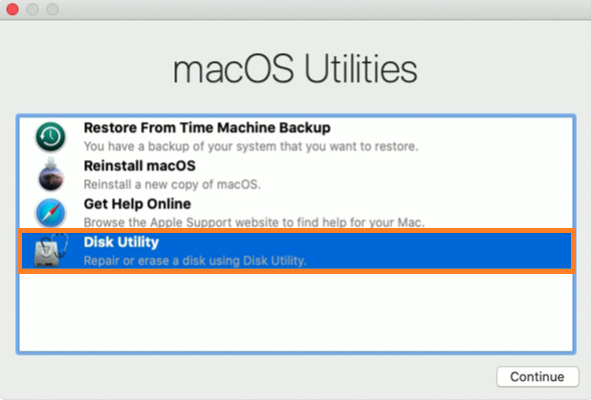If you are trying to find effective solutions to fix macOS High Sierra update stuck or failure error, you are at the right place. If you cannot download or install macOS 10.13 update on your Mac, or macOS 10.13 gets stuck, freezes or fails to install, don’t panic and just simply follow these instructions.
Part 1: Fix macOS High Sierra 10.13 Downloaded But won’t Install
If you get stuck or fail to install the downloaded macOS 10.13, follow any one of the below tips to fix the issue:
- Open Launchpad > Delete "Install macOS Sierra" file with a question mark on it
- Reboot Mac and retry downloading a new macOS Sierra update 10.13
- Click Apple Menu> Select App Store > Click Update next to macOS Sierra in the Update section.
Part 2: Fix macOS 10.13 High Sierra Fails to Install/Gets Stuck or Freezes while Installing
You can go with two troubleshooting methods to fix the macOS 10.13 installation failure error:
Method 1. Install macOS Update in Safe Mode to Fix the macOS High Sierra 10.13 Update Stuck Error
- Disable or uninstall any Anti-virus software on your Mac
- Ensure Mac computer has a proper and reliable internet connection
- Install macOS Sierra in Safe Mode
- Hold Power until your Mac shuts down > turn your Mac on and hold the Shift key > release Shift when the Apple logo appears > The Mac shall be booted into the Safe Mode
- Then try to install macOS 10.13 update again
If you cannot install macOS 10.13 in Safe Mode, try a clean installation of the new update.
Method 2. Clean installation of macOS High Sierra 10.13 to Fix macOS Fails to Install Issue
To complete a clean installation of macOS High Sierra 10.13 on Mac, you may need to do some pre-installation preparation:
Step 1. Create a Bootable Installer
To do this, follow the below-mentioned guidelines:
- Download the macOS Sierra 10.13 installation package from Mac App Store
- Connect a new USB drive with Mac > Open Disk Utility in Applications/Utilities folder > Select thumb drive in sidebar and click Format

- Name USB as Untitled > Choose OS X Extended > Click Erase > Open Terminal once the USB is formatted and finish downloading macOS Sierra
- Ensure USB named Untitled is connected to Mac > Type below command in Terminal and hit Enter: sudo /Applications/Install\ macOS\ Sierra.app/Contents/Resources/createinstallmedia --volume /Volumes/SierraBootInstall --applicationpath /Applications/Install\ macOS\ Sierra.app --nointeraction &&say Done
- Enter the Administrator password if necessary. The command will create a bootable Sierra installer on the USB drive
Step 2. Clean Installation of macOS 10.13
- Connect a USB bootable drive to your Mac and restart the Mac by holding Option until you hear the reboot tone
- Select the disk called Install macOS Sierra in the drive list that appears on screen
- Once the USB drive is booted, select Disk Utility> Choose Mac’s startup from the list > Click Erase

- Once Mac’s startup disk is formatted, return to the Utilities window and select Install macOS > Choose the recently erased startup drive to install macOS > Follow onscreen prompts to complete the installation
Now that you are aware of the errors one might encounter while updating to macOS High Sierra. Refer to this article to find out some of the most common issues with MacOS Sierra and learn various solutions to fix them.
Extra Tip: Recover Lost Data due to macOS 10.3 High Sierra Update
If you forgot to create backups for your Mac data before the macOS 10.13 update, you still have a chance to restore lost data due to the update. Remo Recover for Mac allows you to restore all data lost due to a macOS update.
You can also utilize this toolkit to recover files lost due to Mac crash, corruption of Mac hard drive, and many more.
Go through this article to find out how to get User Library Folder in your macOS Sierra favorites list.